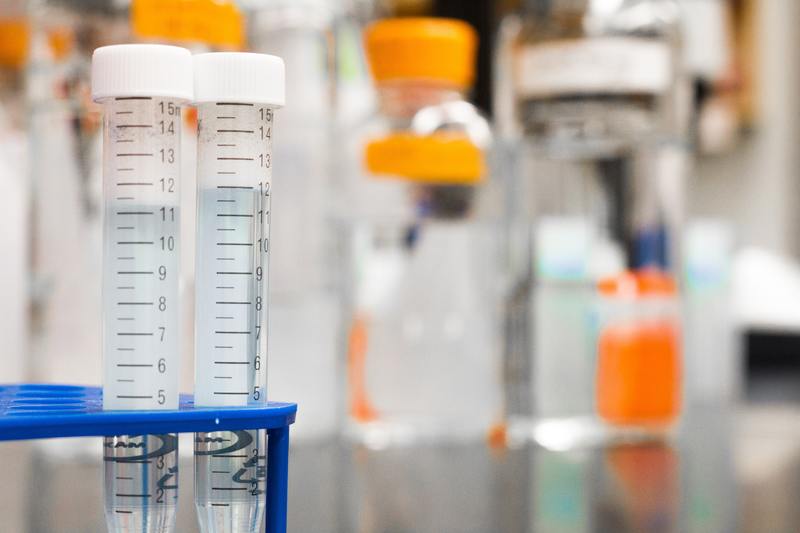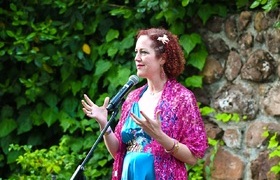Volunteers push back against pandemic with multi-pronged partnership
31 July 2020 | Story NOBHONGO GXOLO. Photo PEXELS.COM. Read time 5 min.
A massive collaborative effort between multi-sector volunteers from the IDM at UCT in partnership with the South African Medical Research Council (SAMRC) and National Health Laboratory Service (NHLS) has yielded a tag-team effort to test patient samples for SARS-CoV-2. This development is part of a multi-centre “surge testing” initiative convened by the SAMRC which involves the IDM and other academic centres across South Africa.
On March 16th, just 10 days before President Cyril Ramaphosa declared the national lockdown, Dr Georgia Schäfer, a senior lecturer in the Department of Integrative Biomedical Sciences and Associate member of the IDM, reached out to Mizrahi and Dr Marvin Hsiao, the lead pathologist in the Division of Medical Virology responsible for SARS-CoV-2 testing in the NHLS Virology lab at Groote Schuur Hospital (GSH). Schäfer had an offer to provide her services to assist with the expected increased demand for testing. As a highly experienced molecular biologist she would be well placed to do just this. Mizrahi acknowledges the offer from Schäfer as the spark that prompted her to ascertain the level of interest and lab capacity for undertaking such an initiative. The response confirmed what Mizrahi had suspected when first discussing the concept with other research leaders in early February, that academic centres should be prepared to provide the surge testing capacity.
Currently working in concert are teams from the Wellcome Centre for Infectious Diseases Research in Africa (CIDRI-Africa), which includes Schäfer and her group, and the South African Tuberculosis Vaccine Initiative (SATVI) – both housed at the IDM. These teams work closely with Hsiao and other experts in diagnostic pathology on the UCT/NHLS joint staff whose support and external quality assurance were instrumental in enabling the IDM teams to begin surge SARS-CoV-2 testing in June.
A communication platform set up between UCT and the NHLS informs the IDM-based teams of the daily arrival of patient samples from the NHLS Virology lab at GSH. According to Schäfer, “Patient samples arrive either as dry swabs for us to process or are alternatively already processed in saline. We extract RNA (ribonucleic acid) for subsequent reverse transcription (RT) followed by quantitative polymerase chain reaction (qPCR) which detects three different SARS-CoV2 genes. If at least two such genes are detected within our quality control parameters, a sample will be reported as positive.”
With the tests complete, the team performs basic analysis and return both the raw and the analysed data to the NHLS. It is here that the results are interpreted, authorised and reported. The teams are working together to support the NHLS in their testing capacity with the aim of providing test results as quickly as possible and are currently achieving a turnaround time of no less than 12 hours. Having been up and running for several weeks, the teams have established a daily working testing routine, and have recently expanded their capacity by bringing onboard additional volunteers.
Speaking to the adjustment of adapting research laboratories to meet the needs of diagnostic testing, Mizrahi said, “The SATVI and CIDRI teams have vast experience in working with clinical samples and the labs are well-capacitated with the necessary infrastructure for PCR testing. So, the transition, overseen by our colleagues from the diagnostics lab at GSH, has been quite smooth and seamless.”
Professor Thomas Scriba, deputy director of immunology at SATVI, says he saw a need where his lab and molecular biology expertise could be of service. He was compelled, prompted by the spread of the virus and the public health emergency the pandemic has fuelled, to help: “It is important to do what we can to ensure that SARS-CoV-2 testing is done with accuracy and as efficiently as possible, so that people who may be infected with SARS-CoV-2 know their results as quickly as possible while the appropriate healthcare and public health interventions are followed.”
Dr Nicole Bilek, a lab manager at SATVI, rattles off a long checklist of acronyms – a necessary shorthand when outlining some of the processes that had to be followed to get the project off the ground. These included preparing a RA (risk assessment) for the IDM H&S (Health & Safety) committee, the FBC (Faculty Biosafety Committee) and the IBC (Institutional Biosafety Committee) while also facilitating the approvals of these; training on the SOPs (standard operating procedures); guidance of QA (quality assurance) requirements; co-ordination of data transfer in liaison with ICTS (Information and Communication Technology Services) and the NHLS; as well as SAMRC reporting and financial reconciliation – to name a few.
IT wizard, SATVI’s Dr Simon Mendelsohn recognises the importance of emphasising the complementary team effort that realised this work. His role was to help set up and validate the SARS-CoV-2 molecular testing on the QuantStudio instruments, using his experience in real-time PCR as a tuberculosis researcher. He is also assisting in the analysis of the data and worked closely with Dr Heleen Vreede from the UCT/NHLS Division of Chemical Pathology to set up the IT system for transferring results from the UCT labs to the NHLS.
At the IDM, H&S manager Berenice Arendse and Professor Digby Warner, at the helm of the FBC, carried the responsibility for expeditiously overseeing the regulatory approvals while on a different campus, Claude Bassuday, the Director of Legal Services in the Registrar’s Office was functioning as an instrument of support by getting the necessary agreements in place.
Bilek’s CIDRI-Africa counterpart, lab manager Fatima Abrahams, says the involvement of this centre meant first checking whether they had the equipment and infrastructure required to assist. Having established this, Professor Robert Wilkinson, the director of CIDRI-Africa, made funds available to procure the necessary reagents. She explains that this happened “at a time when we were not sure that we would be able to recoup the funds.”
For Wilkinson, getting involved was a no-brainer: “The control of any infectious disease is critically dependent on accurate ascertainment which informs personal and community management. Preparing, in March, for what was to come it was self-evident that countries that had adopted intensive testing strategies were faring better than the ill-prepared ones. Given that our laboratories had facilities and highly skilled technical personnel, I sought and obtained the permission of my steering group to commit discretionary research funding to kickstart this diagnostic testing. We are grateful for the close relationship that subsequently developed with the SAMRC and NHLS, that has allowed us to sustain this contribution.”
When Abrahams, Schäfer and Bilek realised they were all working towards the same goal, they turned towards activating a more systematic and focused approach. “It took about eight weeks to get to the first test… We set up the process in record time through phenomenal teamwork. We drew on our personal strengths to arrange budgeting and finance, sorting out regulatory and health and safety approvals and other logistical arrangements.” Thus far, the IDM team has collectively contributed to almost 5000 tests being processed.
A resonating sense of social responsibility invoked action from these various experts, an obligation to help which Mizrahi terms as “capturing the spirit of social responsiveness, at its very best.” She says, “As IDM director and administrative lead on this project, I’m incredibly proud of the volunteers who let us draw on their technical expertise and skill during the lockdown. They’re the reason we’ve been able to participate in this important initiative.”
Schäfer echoes the sentiment: “Working together got this project off the ground smoothly, given these unprecedented circumstances. Without such collaboration in place, this project would simply not have been possible.”
 This work is licensed under a Creative Commons Attribution-NoDerivatives 4.0 International License.
This work is licensed under a Creative Commons Attribution-NoDerivatives 4.0 International License.
Please view the republishing articles page for more information.










